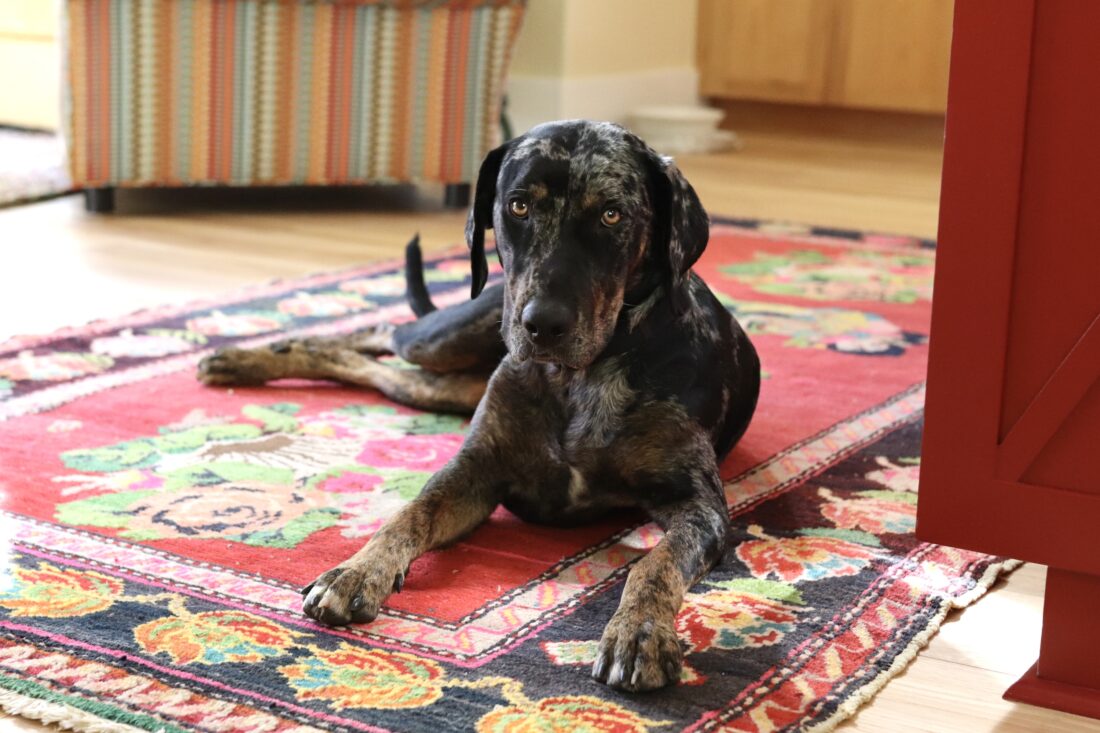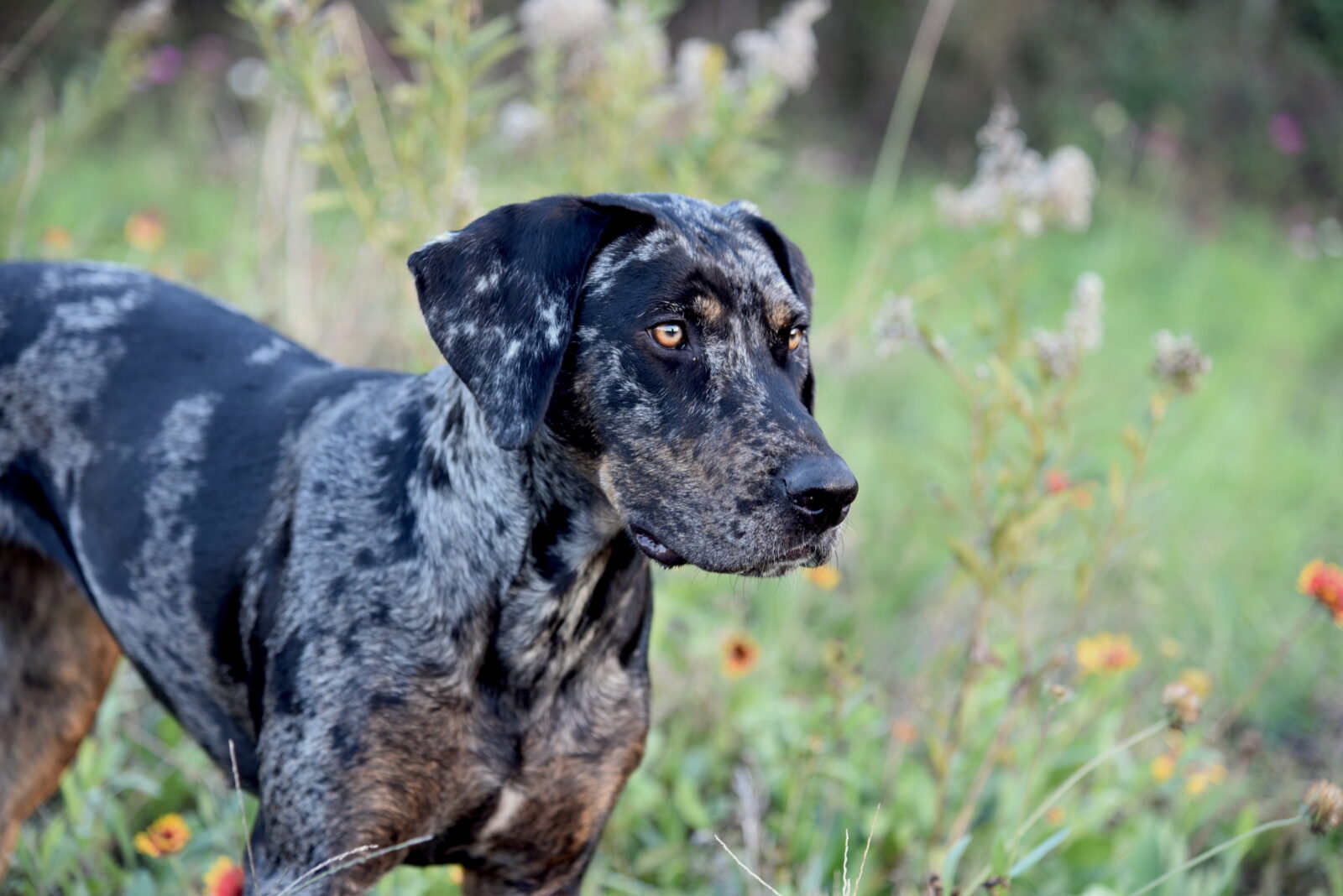With a thump of webbed paws hitting the muddy ground and a resonant bellow, a mass of grey and black fur dashes from a swamp. Such is the spirit of a Catahoula leopard dog, a canine who was born and bred to handle the marshy wilderness of Louisiana.
Next month will mark thirty years since the breed was first recognized by the United Kennel Club, but its history began hundreds of years earlier. Much like the Southern wetlands the dogs roam, the breed’s origins are a bit murky, but the general consensus is that they evolved from a combination of red wolves and the dogs of Native Americans near Central Louisiana’s Catahoula Lake.
Enter conquistador Hernando de Soto and his pack of “war dogs,” a mix of greyhounds and mastiffs that he used to attack Native Americans as he ravaged coastal Southern communities in search of gold. His dogs began to breed with local dogs and wolves, producing a “mottled, spotted-up dog with strange eyes,” in the words of Lara Hutchinson, vice president of the National Association of Louisiana Catahoulas. Later, French colonists brought over the final puzzle piece of the modern-day Catahoula, dogs known as beaucerons.
Although only about 30% Catahoula, this pup’s Catahoula genes are apparent.
Often equipped with a light-colored eye (or two), a mottled coat of black, grey, or red, and pronounced musculature, today’s Catahoulas look like what would happen if the Lion King’s depiction of a hyena got frisky with a Labrador. But residents of Louisiana learned to love the slightly startling gaze of the striking dogs as they showed their swamp-navigating prowess. Their strong knacks for trailing, herding, and baying didn’t hurt their cause either, Hutchinson says. “As the many stories were told, soon the Catahoulas—as people started calling them—were working cattle, hunting wild hogs, and guarding the homeplace,” she says.
Catahoulas are the only dog breed woven into the fabric of Louisiana history, and it shows. “Catahoulas have webbed toes that help the dogs walk easily in the swampland’s mud as well as snow-covered land,” Hutchinson says. “They are excellent swimmers. They have a short coat that is great for the environment of the South but also adaptable to other climates as well.” Since their early years in the Pelican State, their stature has escalated. In 1979 the pups became the official state dog of Louisiana.
While some Catahoulas can still be found romping in swamps, many now enjoy spending time on sofas, curled up next to the humans they love. But even the biggest couch potatoes among them retain some behaviors of a fierce marsh dweller. NALC’s own motto is “not everyone needs a Catahoula.” After all, these dogs can rival speeds of their greyhound ancestors when they take off across a field or dart after a deer, and they require a lot of day-to-day exercise. But when they’re not sprinting upwards of forty miles per hour, they’re probably searching for a cuddle buddy.

Cozy at home.
While they all may share similar dispositions, the appearance of Catahoulas can vary widely. Not all have the quintessential Catahoula glass eyes; some are more amber or a warm brown. Other dogs might sport a silver or tan coat instead of an iconic merle, but all are generally trim and muscular underneath their short fur.
But even in the Gulf Coast, where Catahoulas are most abundant, you may encounter a mix before a purebred. As is the case with many of the best dogs, traces of Catahoula genes are often intertwined with those of other breeds, but they still shine through. Purebred or otherwise, if you adopt a pup with Catahoula blood in its veins, be prepared for long howls, fast runs, and unwavering love.
Source link https://gardenandgun.com/articles/an-ode-to-the-catahoula-leopard-dog-louisianas-swamp-pup/

